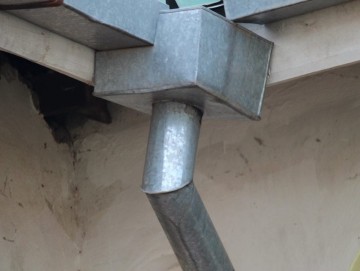

 |
In order for the school to be functional as a boarding facility for orphaned children, the school needed a steady reliable way of providing water to the school via rainwater collection. In the interest of ecological sustainability, it was decided to harvest rainwater, store it in cisterns and pump it to a storage tank where it would be sand filtered. This solution provides the school with clean water through the dry season.
The school's main source of water is a rooftop water harvesting collection system that channels rainwater to two large underground cisterns. A triple water treatment system ensures safe drinking water. Thanks to the cisterns, NMS has had sufficient water during recent droughts in western Kenya. Water needs have increased as the student and staff population have grown; a third cistern is being considered.
A rainwater harvesting system consists of three basic elements: a collection area, a conveyance system, and storage facilities. The collection area in most cases is the roof of a house or a building. The effective roof area and the material used in constructing the roof influence the efficiency of collection and the water quality.
A conveyance system usually consists of gutters or pipes that deliver rainwater falling on the rooftop to cisterns or other storage vessels. Both drainpipes and roof surfaces should be constructed of chemically inert materials such as wood, plastic, aluminum, or fiberglass, in order to avoid adverse effects on water quality.
The water ultimately is stored in a storage tank or cistern, which should also be constructed of an inert material. Reinforced concrete, fiberglass, or stainless steel are suitable materials. Storage tanks may be constructed as part of the building, or may be built as a separate unit located some distance away from the building.
Rainwater harvesting systems require few skills and little supervision to operate. Major concerns are the prevention of contamination of the tank during construction and while it is being replenished during a rainfall. Contamination of the water supply as a result of contact with certain materials can be avoided by the use of proper materials during construction of the system.
Nambale Cornerstone Project
The Nambale Cornerstone Project is a 501(c)(3) charitable foundation that transforms and sustains marginalized communities by educating, nurturing, and empowering their most vulnerable members. Founded in 2008, the foundation is a primary benefactor the Nambale Magnet School in Western Kenya which provides education, shelter, and support for AIDS orphans and other vulnerable children.

all materials copyright ©2024
Cornerstone Project, Inc.